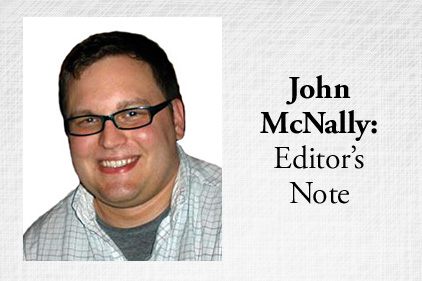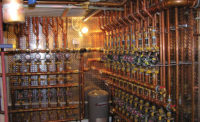In this space over the course of my first full calendar year at pme, I have banged the drum (and not slowly) in favor of enhancing water savings in fixtures and applications. This is a passion of mine because I truly believe we need to do everything possible to save the valuable resources at our disposal.
That being said – and with much more experience in this industry under my belt – I understand more of the risks and trials engineers face with designing intricate systems that reach new levels of efficiency. Just a few of the major issues engineers face are to make sure the system performs exceptionally, navigating local and national codes, and, maybe most importantly, protecting people from Legionella and other waterborne diseases.
At the September ASPE Expo in Chicago, a capacity crowd learned during a panel discussion that the new ASHRAE standard on Legionella was open for public review. On the ASPE Expo exhibit floor, Viega put a spotlight on its new campaign promoting water quality and hygiene.
One month later at Greenbuild 2014 in New Orleans (pme’s report on the show appears on page 28) companies such as Rada, Kohler Co.’s United Kingdom-based company, made its mark on how to provide proper performance and safety with faucets and showerheads designed mainly for the health-care market.
Derek Bower, a product director of metal systems with Viega, says sitting down with engineers and assisting wherever possible in the development of a safe application is critical. Risk vs. reward must be factored into an engineer’s plan.
“Certainly we should be reducing energy and water usage, but there are times when the public health risks outweigh, in our opinion, reducing energy and water loss,” he states. “There are times when it might be a stronger consideration to minimize the risks of contracting an illness instead of saving energy and water usage.”
Rada has dedicated a team to provide technical support, sales backup and installation specialists as it launches in the U.S. Additionally, lessons learned from overseas will be brought across the pond.
“In the U.K., an effective way of helping to reduce Legionella is to carry out a thermal disinfection,” says Kevin Peel, an associate director of new product development with Rada. “This does require the supply water to be maintained above 140° F. In the U.K., fitting thermostatic showers and faucets in hospitals is a requirement. Therefore, hot water supply temperature can be safely kept above the necessary 140° F to ensure effective thermal disinfection is carried out.”
I am pleased to see manufacturers stepping up in the industry to make this a top priority. Recently, my father has dealt with health issues that required extended stays at different hospitals. The thought of him going into a safe haven to get healthy only to come out with a new illness would have been devastating.
While our industry may not have to take a vow on the level of the Hippocratic oath, we do have to understand our responsibility to protect the end users while delivering a functional system to the client.
Make sure you have that balance. Many are depending on it.




